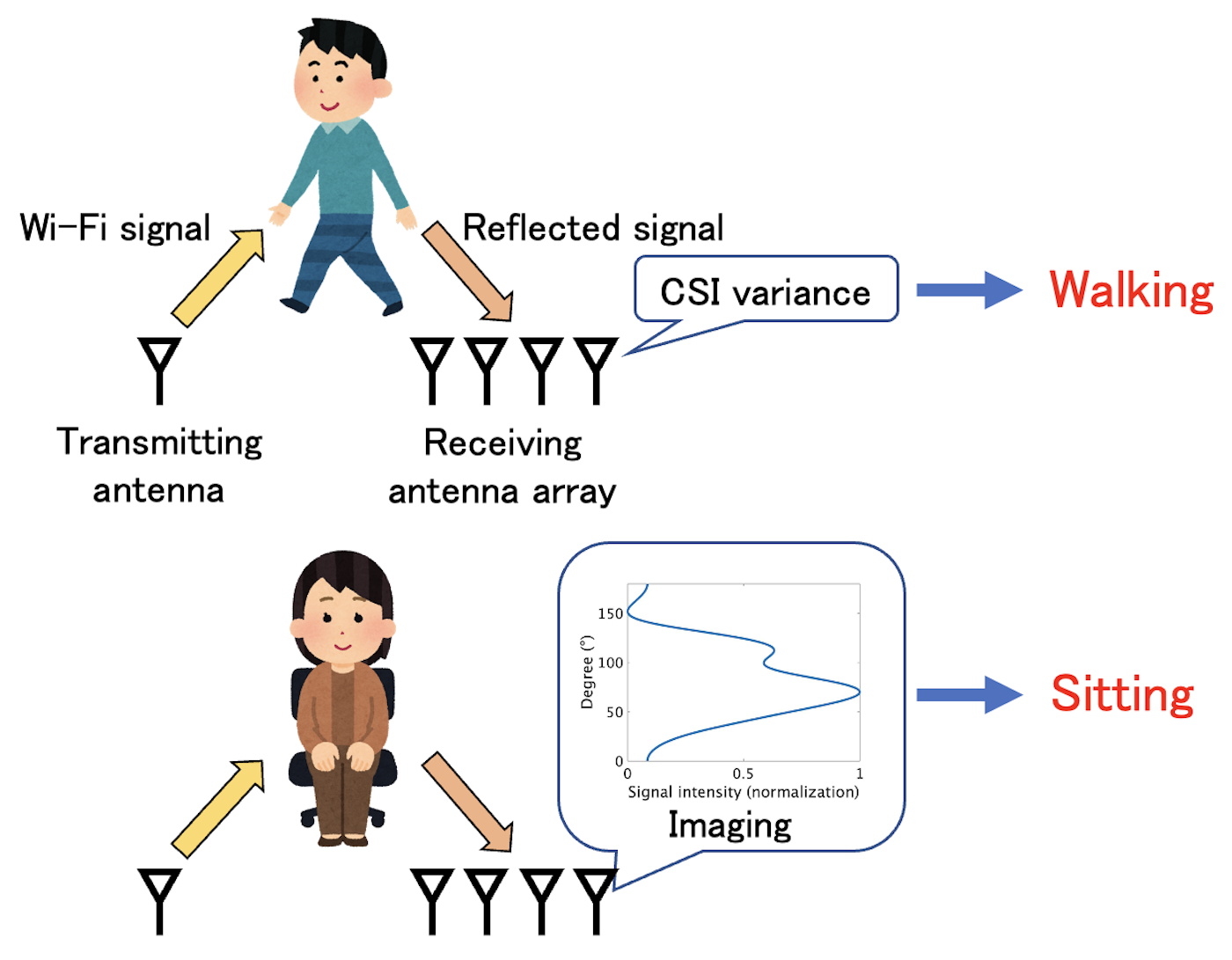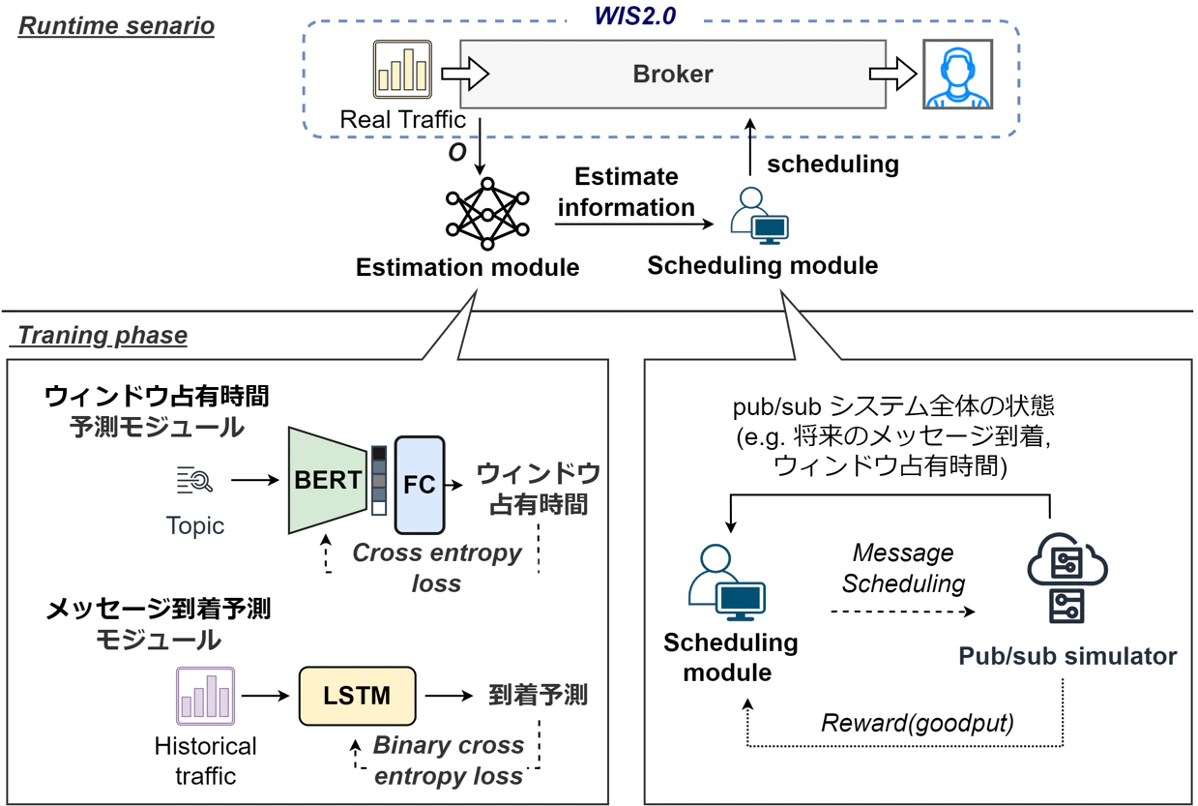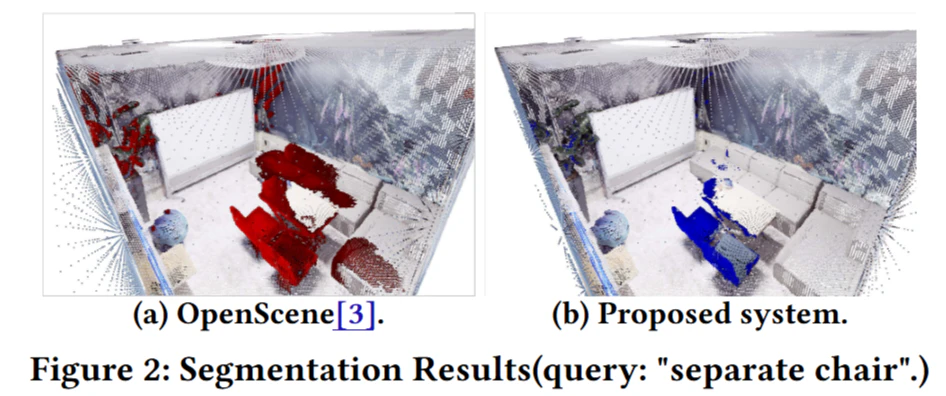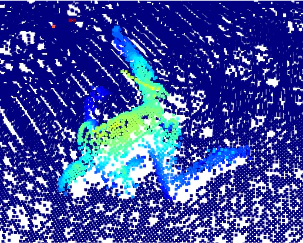Recently, Wi-Fi CSI (channel state information) has been widely studied for low-cost activity recognition with low privacy concern. CSI represents how the amplitude and phase of the transmitted signal changes as it reaches the receiver. CSI enables activity recognition that addresses privacy, maintenance, and implementation cost concerns. However, most CSI-based methods require the collection of training data for each environment to construct activity recognition models by learning algorithms, making them time-consuming to implement.
In our research, we design a method that combines CSI variance and Wi-Fi imaging as a solution to this problem. As a target application, we focus on recognition of in-home activities such as standing, sitting, and walking, which is useful for various services such as elderly monitoring and lifestyle monitoring. Since the value of CSI changes as a person moves, the variance of CSI can be used to detect walking independently of the environment. Wi-Fi imaging, on the other hand, extracts the strength of the radio signal in each direction by using a physics-based model which geometrically defines the phase difference based on the direction of arrival and the distance between the receiving antennas. Because the Wi-Fi imaging is built upon the physics-based model, it enables us environment-agnostic imaging. From the imaging results, we recognize person's posture which infers in-home activities such as eating (sitting) and sleeping (lying down).

Published Papers
- Okawara, K., Uchiyama, A., Erdelyi, V., Murakami, T., Abeysekera, H., & Higashino, T. (2022). A Preliminary Study on Activity Recognition by Wi-Fi Imaging. IEICE Technical Report; IEICE Tech. Rep., 121(333), 75-79.
- Okawara, K., Uchiyama, A., Erdelyi, V., Murakami, T., Abeysekera, H., & Higashino, T. (2021). A Preliminary Study on Wi-Fi CSI Imaging. IEICE Technical Report; IEICE Tech. Rep., 120(382), 63-66.
- 大河原一輝, 内山彰, 村上友規, & 東野輝夫. (2021). Wi-Fi CSI を用いたイメージングに関する基礎検討. 研究報告ユビキタスコンピューティングシステム (UBI), 2021(26), 1-4.
- 大河原一輝, & 内山彰. (2022). 通信設定が Wi-Fi CSI に与える影響の調査. 第 30 回マルチメディア通信と分散処理ワークショップ論文集, 216-220.
- 大河原一輝, 内山彰, エルデーイヴィクトル, 村上友規, アベセカラヒランタ, & 東野輝夫. (2022). Wi-Fi イメージングによる行動認識の検討. 電子情報通信学会技術研究報告; 信学技報, 121(333), 75-79.





